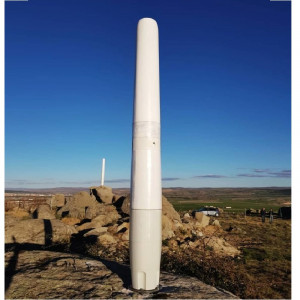| Vortex Bladeless Wind Power |

| Vortex Bladeless Wind Power |
| Registration Date | 18 Sep 2022 |
| Revision Date | 18 Sep 2022 |
| Share |
Renewable Energies Wind Energies
Wind Turbine
Vortex Bladeless is a vortex induced vibration resonant wind generator. It harnesses wind energy from a phenomenon of vorticity called Vortex Shedding. Basically, bladeless technology consists of a cylinder fixed vertically with an elastic rod. The cylinder oscillates on a wind range, which then generates electricity through an alternator system. In other words, it is a wind turbine which is not actually a turbine.
Vortex wind generators are more similar in features and cost-effectiveness over time to solar panels than to regular wind turbines.
The outer cylinder is designed to be largely rigid and has the ability to vibrate, remaining anchored to the bottom rod. The top of the cylinder is unconstrained and has the maximum amplitude of the oscillation. The structure is built using resins reinforced with carbon and/or glass fiber, materials used in conventional wind turbine blades.
The rod’s top supports the mast and it’s bottom is firmly anchored to the ground. It is built of carbon fiber reinforced polymer, which provides a great fatigue resistance and it has a minimal energy leak when oscillating.
Naturally, the design of such wind turbine is quite different from a traditional turbine. Instead of the usual tower, nacelle and blades, our device has only a mast made of lightweight materials over a base. This reduces the usage of raw materials and the need for a deeper foundation.
Current wind turbine technology need to support very different load levels under variable wind speeds, which puts high mechanical demands on transmitting components such as gears, bearings, bushings or brakes. The multiple moving parts are constantly under wear, which leads to high maintenance costs.
Bladeless wind turbines completely eliminates mechanical elements that can suffer wear by friction. The main materials used for manufacturing Vortex turbines are carbon fiber polymers, plastics, steel, neodymium, and copper. The working limits of these materials are far away from Vortex’s operational standards.